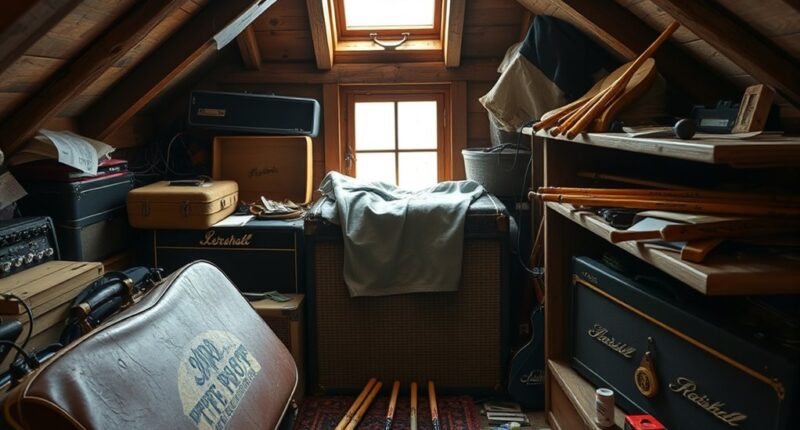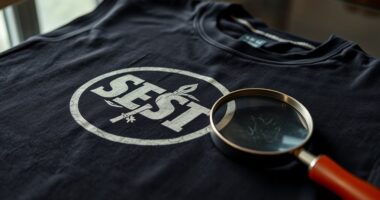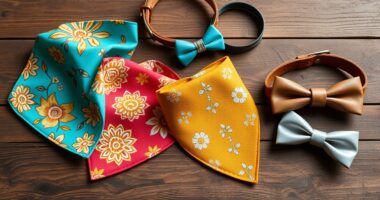Investing in tour-used gear can be a smart move if you focus on high-quality, rare, or vintage items that may appreciate over time. Being informed about market trends, condition, and authenticity is essential to avoid potential pitfalls. While some gear can serve as a valuable long-term investment, others might turn into a money pit. Keeping an eye on market fluctuations and historical value can help you make smarter choices—discover more about turning gear into a solid investment.
Key Takeaways
- Well-maintained, authentic vintage gear can appreciate and serve as a valuable long-term investment.
- Market demand and trends significantly influence the collectible value of tour-used gear.
- Condition, provenance, and rarity are critical factors in determining whether gear will be a good investment or a money pit.
- Research and data analysis help identify genuine collectibles versus fleeting hype, reducing financial risk.
- Long-term success depends on patience, thorough evaluation, and understanding that not all tour-used gear will increase in value.

Investing in used gear can be a smart way to save money while still getting high-quality equipment. When it comes to tour-used gear, many collectors and musicians see it as an opportunity to acquire valuable items at a fraction of the cost. Vintage value plays a significant role here, as certain pieces of used gear—especially those with historical or unique qualities—can appreciate over time. You might find a vintage amplifier or guitar that, thanks to its rarity and desirability, could increase in worth or retain its value. However, it’s essential to understand the market fluctuations that influence these investments. The value of used gear isn’t static; it rises and falls depending on trends, rarity, and demand.
Investing in used gear offers value, but market fluctuations and condition impact long-term worth.
Market fluctuations can make or break your investment in tour-used gear. If a particular model or brand gains popularity, its vintage value can spike almost overnight, turning a modest purchase into a lucrative one. Conversely, if interest wanes or newer technologies overshadow older equipment, prices may decline. That’s why researching current trends and understanding the cyclical nature of the market is fundamental. You don’t want to buy into a hype only to see your investment lose value months later. Staying informed about which brands and models are gaining traction helps you make smarter choices.
Additionally, the condition of the gear heavily impacts its value. Well-maintained, original items tend to fetch higher prices and hold their worth better during market fluctuations. Authenticity and provenance matter too—knowing the history of a piece can boost its desirability. Keep in mind that used gear with signs of heavy wear or non-original parts might be less valuable and could diminish in worth over time. Furthermore, leveraging AI tools to analyze market data and trends can provide a competitive edge in making informed purchasing decisions.
While investing in used gear offers opportunities, it also requires a cautious approach. You must consider whether you’re purchasing for personal use or as an investment. If your goal is growth, understanding how the vintage value of certain items has evolved historically can guide your decisions. Don’t be swayed solely by current trends; think long-term. The key is to buy quality, rare, or historically significant pieces that are likely to withstand market fluctuations. With patience and research, used gear can be much more than just a cost-saving measure—it can become a rewarding investment that pays off as its value appreciates over time.
Frequently Asked Questions
How Can I Verify the Authenticity of Used Tour Gear?
You can verify the authenticity of used tour gear by consulting collector insights, which offer valuable tips on spotting genuine items. Always check for official tags, serial numbers, and matching provenance details. Use authenticity verification services or compare with reputable sources online. Authentic gear often has unique wear patterns or markings. Trust your instincts, but confirm through multiple sources to ensure you’re investing in real collectibles rather than fakes.
What Are the Risks of Investing in Vintage Tour Equipment?
You risk investing in vintage tour equipment because it may not appreciate like rare music memorabilia, and collector motivations vary. Some pieces might be overvalued or difficult to authenticate, leading to potential losses. Additionally, the condition and provenance influence value, so without careful research, you could end up with a money pit. Stay aware that emotional attachment may cloud judgment, making it essential to evaluate market trends and authenticity thoroughly before investing.
How Does Gear Condition Affect Its Resale Value?
Gear condition directly impacts its resale value more than you might imagine, making it the king of collector’s market appeal. If you neglect gear maintenance, even legendary tour pieces can plummet in worth, turning into forgotten relics. Pristine condition, with minimal wear and well-preserved details, skyrockets resale price, attracting serious collectors. So, keep your gear in top shape, and you’ll maximize its value in the fiercely competitive collector’s market.
Are There Specific Brands More Likely to Appreciate in Value?
Certain brands, like Gibson, Fender, and Martin, are more likely to appreciate in value due to strong brand reputation and consistent quality. You should keep an eye on market trends, as limited editions or vintage models from these brands tend to gain collector interest. By focusing on well-known, reputable brands and staying updated on market shifts, you increase your chances of making a profitable investment in tour-used gear.
What Legal Considerations Exist When Reselling Used Tour Gear?
Ever wonder if reselling tour-used gear could land you in legal trouble? You need to guarantee legal compliance by understanding resale regulations, including licensing and authenticating the gear. Always verify ownership rights and avoid counterfeit items. Are you prepared to navigate potential trademark issues or contractual restrictions? Staying informed about legal considerations helps you avoid fines or legal disputes, making your resale efforts smoother and more secure.
Conclusion
When considering investing in used tour gear, remember that only about 20% of vintage equipment appreciates in value, making it a risky venture. If you’re passionate and patient, it can be rewarding, but don’t expect quick returns. Weigh the potential for appreciation against the costs of maintenance and authenticity. Ultimately, whether it’s a collectible or a money pit depends on your knowledge and dedication—so stay informed and invest wisely.









